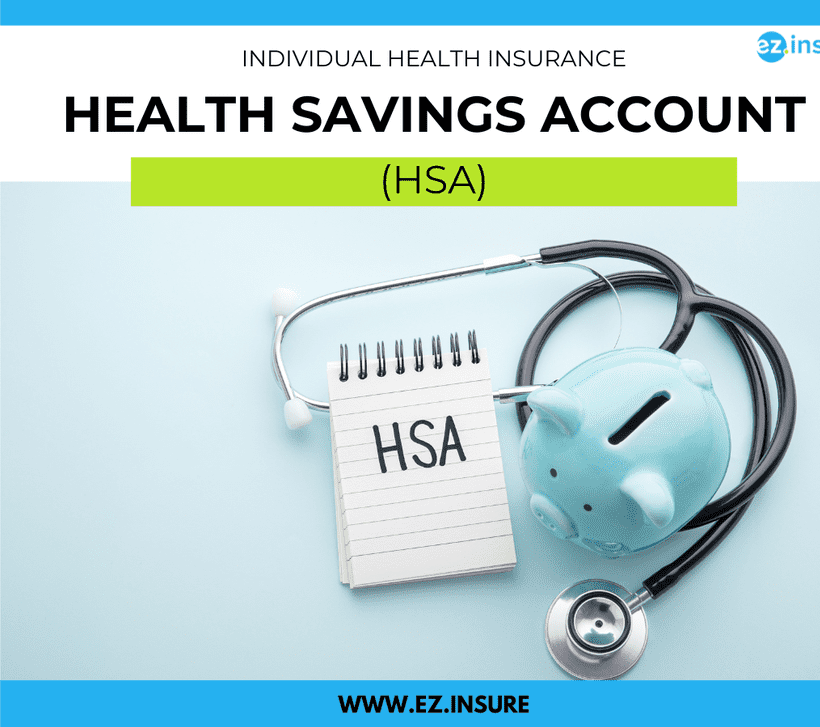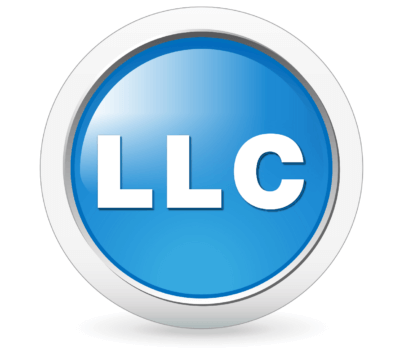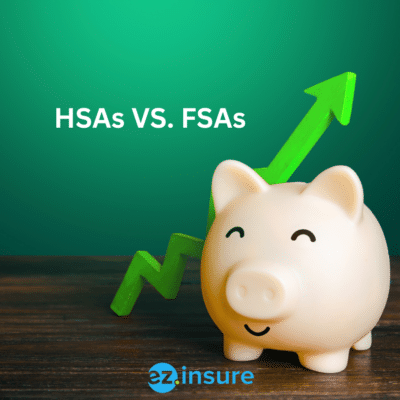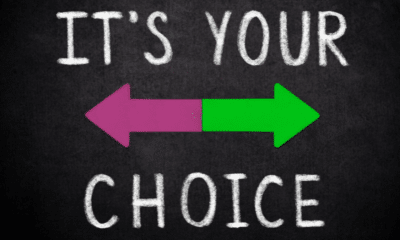
If you’re looking for another way to help pay for your medical expenses, a Health Savings Account (HSA) could be the way to go. These tax-advantaged accounts for people with High Deductible Health Plans (HDHPs) allow you to put money aside for qualified medical expenses, like prescription drugs, as well as medical, dental, and vision care. The money you put aside even grows with time. There are restrictions on who can get an HSA and how much you can contribute, but these accounts offer a lot of benefits.
Jump To:
-
How HSAs Work
-
Who Is Eligible for an HSA
-
What Is a Qualified Medical Expense?
-
HSA Advantages and Disadvantages
-
Enrolling in Medicare with an HSA
-
HSA Beneficiaries
-
The Cost of an HSA
-
FAQs
-
Explore Your Health Insurance Options Today
How HSAs Work
Only individuals with a High Deductible Health Plan can get an HSA. HDHPs have higher annual deductibles to meet, but they typically have lower premiums than other types of plans.
If you choose to open an HSA alongside your HDHP, you will deposit money into the HSA that you can withdraw to pay for qualified medical expenses that your plan doesn’t cover, including medications and medical equipment. You can even use your HSA funds to pay your medical bills until your deductible is met, and then use it to cover coinsurance or copays until you meet your out-of-pocket maximum for the year.
One of the main benefits of having an HSA is that these accounts have a triple tax advantage. The money you deposit into an HSA is tax-free. Additionally, you won’t pay taxes when you withdraw funds from your HSA to pay for qualified medical expenses. And finally, you will also earn interest tax-free with an HSA.
Who Is Eligible for an HSA
As we mentioned, HDHP policy holders are eligible to open HSAs, and the two are frequently combined. Since these accounts have tax advantages, you have to fulfill requirements imposed by the Internal Revenue Service (IRS) in order to be eligible for a HSA. An individual is qualified if they:
- Have a qualifying HDHP. For 2025, the IRS considers any health plan with a deductible of at least $1,650 for an individual or $3,300 for a family to be a High Deductible Health Plan.
- Have no other health insurance other than the HDHP
- Are not enrolled in Medicare
- Are not a dependent on someone else’s taxes
It’s important to note that, while you can’t have another general health insurance plan other than your HDHP, you can have separate plans for dental, vision, life and disability without being disqualified for an HSA.
What Is a Qualified Medical Expense?
As long as the funds in your HSA are used to pay for services that the IRS recognizes as eligible medical costs, withdrawals from an HSA aren’t subject to taxes. But what are qualified medical expenses? Qualified medical expenses include:
Medical
- Acupuncture
- Ambulance services
- Birth control/contraceptive devices
- Blood pressure monitors
- Blood sugar test kits/test strips
- Chiropractic therapy/exams/adjustments
- Copayments
- Dermatological services
- Diagnostic services
- Flu shots
- Gynecological care
- Incontinence supplies
- Infertility treatments
- Insulin and diabetic supplies
- Laboratory fees
- Lactation expenses
- Legal sterilization
- Menstrual care products
- Nasal strips
- Obstetric care
- Over the counter (OTC) treatments containing medicine (i.e., cold treatments, pain relievers, sinus medications, etc.)
- Physical exams
- Pregnancy test kits
- Smoking cessation programs
- Therapy or counseling
- Treatment for alcohol or drug dependency
- Vaccinations
- Wrist supports/elastic straps
- X-ray fees
Vision
- Contact lenses and lens solution
- Diagnostic services
- Eye exams
- Eye surgery
- Laser eye surgery/LASIK
- Optometrist/ ophthalmologist fees
- Prescription eyeglasses and sunglasses
- Seeing eye dogs (buying, training, and maintaining)
- Vision plan co-insurance
- Vision plan deductible
Dental
- Cleanings and exams
- Crowns and bridges
- Dental plan co-pays
- Dental surgery
- Dental X-rays
HSA Advantages and Disadvantages
HSAs have both advantages and disadvantages. Whether one of these accounts is right for you is largely dependent on your financial and personal circumstances.
Advantages
- Tax benefits – As we mentioned, one of the biggest advantages to these accounts is that you can contribute money to an HSA on a pre-tax basis. You can deposit, withdraw, and earn money tax-free. Not only that, but by contributing money from your paycheck to your HSA, you will pay less in income and Social Security taxes overall.
- Retirement savings -You can also use your HSA to grow your retirement savings. If any money is still in the account, your HSA can be cashed out at age 65, but it’s not required (although most people do, since you can’t contribute to an HSA if you’re enrolled in Medicare). No mandatory payout is required at age 72 1/2, as is the case with most regular retirement plans.
- Employer contributions – If you have a HDP through your employer, your employer can make contributions to your HSA. Contribution amounts are determined by each employer.
- Interest and Investments – Your HSA earns interest tax-free. Many HSAs allow you to choose how to invest your plan, similar to a 401K. Depending on which HSA provider you or your employer use, you may be able to invest in a mutual fund or another investment product. If you’re maxing out your 401k, having an HSA gives you another way to save tax-free money.
- Funds don’t expire – Unlike with other types of health spending accounts, the money in your HSA account rolls over from year to year.
Disadvantages
- Penalties – If you use your HSA for anything other than qualified medical expenses, you will have to pay a 20% tax penalty.
- HDHP requirement – You can’t contribute to an HSA without a HDHP. A high deductible plan has a lower monthly premium, but because of the high deductible, you will be responsible for more out-of-pocket medical costs before your insurance starts to pay.
- Contribution limits – There is a limit to how much you can contribute to your HSA each year. The limit changes yearly, but for example in 2025 the IRS set contribution limits are $4,300 for individuals and $8,550 for families.
- Risks – A HSA is comparable to a 401K, and there are standard risks involved with investments of this type. The funds are invested in the market, thus a hit to the market could also result in a decrease in account value.
Enrolling in Medicare with an HSA
As we mentioned, because you must have a HDHP healthcare plan in order to make pre-tax contributions to an HSA, and you can no longer make pre-tax contributions to your HSA if you sign up for Medicare Part A and/or B. Your account manager should reduce your monthly HSA contribution to zero before your Medicare coverage starts.
But even after you sign up for Medicare, you can still make withdrawals from your HSA to aid with medical costs. The funds in the account will continue to be tax-free as long as you use them for eligible medical expenses. If you use your funds for anything other than eligible medical expenses, those funds become taxable income, but you will not be subject to the 20% penalty.
When you are eligible for Medicare but are still working, you may want to put off enrolling in Medicare so that you can keep funding your HSA, but only if your employer has more than 20 employees. When your employer has fewer than 20 employees, the health insurance provided by your employer is secondary insurance. Meaning your health plan will not pay until after Medicare does. If you do not enroll in Medicare as a primary insurance, you may be left with little to no coverage. So, despite losing the tax benefits of your HSA, you might need Medicare in order to obtain primary insurance.
But if your employer has more than 20 employees, your employer-based health insurance will be your primary insurance. This means that you may not need Medicare yet, and you can delay Medicare enrollment and continue to contribute to your HSA. Even if you delay and miss your Medicare Open Enrollment Period, you can still qualify for the same benefits with a Special Enrollment Period if you later lose coverage or once you have retired. It’s important to note if you do not qualify for a Special Enrollment Period, you might have to pay a penalty.
If you decide to put off signing up for Medicare because you want to keep working and putting money into your HSA, you must also put off collecting Social Security retirement benefits. This is because the majority of people who are receiving Social Security payments are registered in Part A automatically when they become eligible for Medicare. This effectively enrolls you in Medicare, meaning you will no longer be allowed to contribute to your HSA. Unfortunately, you cannot collect your Social Security benefits if you don’t enroll in Part A. So, if you want to continue contributing to your HSA, you cannot collect Social Security benefits until you are ready to enroll in Medicare.
Last but not least, if you want to put off signing up for Medicare, be careful to stop making contributions to your HSA at least six months before you actually intend to enroll. This is important, because when you enroll in Medicare Part A, Medicare can back date coverage as far back as six months. In this case, it will look like you were making HSA contributions while on Medicare. So, you risk paying a tax penalty if you don’t stop making HSA contributions at least six months before signing up for Medicare.
HSA Beneficiaries
When you open an HSA, you will have to choose a beneficiary who will receive any remaining funds in the account in the event of your passing. Your spouse is the ideal beneficiary if you’re married, because they can inherit the remaining money tax-free. Anyone else who inherits your HSA will be liable for taxes based on the plan’s fair market value.
You can formally declare your decision by completing a designation-of-beneficiary form provided by your plan administrator.
The Cost of an HSA
The main expense that comes with HSAs is the out-of-pocket costs of the required HDHP plan. But you might also have to pay an annual or monthly account maintenance fee, as well as investment fees. For instance, you might pay an annual fee to your provider for management of the HSA’s underlying investments. But you’ll also have to pay different cost ratios based on the investments you pick.
To see health insurance costs and information specific to your state click here!
FAQs
-
What is a Health Savings Account?
An HSA is a type of tax-free medical savings account that helps you save money for qualified medical expenses. They can help you lower your overall health care costs by letting you pay for deductibles, copayments, coinsurance, and other medical expenses. Although typically you cannot pay your health insurance premium with your HSA.
-
What are the tax benefits of an Health Savings Account?
HSAs help you save money on taxes in three ways. First, money put into a personal HSA after taxes may be tax-deductible on your federal income tax return. If your employer offers an HSA, you can make payroll contributions before taxes are taken out. This type of contribution saves you more on taxes than tax-deductible contributions made after taxes have been taken out. Second, there are no federal income taxes to pay when you use your HSA money for qualified medical expenses. Third, you don’t have to pay taxes on any growth if you invest any or all of your HSA money.
-
Can my spouse or children use my Health Savings Account?
Yes. You, your spouse, and your eligible dependents can all use your HSA money to pay for qualified medical expenses as long as everyone meets the requirements and you, the account owner, have given each of them permission by asking for an additional HSA debit card in their name.
-
Is a Health Savings Account different from a Flexible Savings Account?
Yes. Unlike flexible spending accounts (FSAs), HSA money doesn’t have a “use-it-or-lose-it” rule. Instead, your HSA balance stays the same from year to year, forever. In general, HSAs cover a wider range of eligible medical costs than FSAs do. Also, FSAs are usually paid for by your employer, but you own your HSA. This means that you will always own your HSA, even if you switch jobs or move to a different state.
Bottom Line
A Health Savings Account, accessible to people who select a high-deductible health plan, can be a great way to save, invest, and pay for medical expenses without paying taxes, thanks to its triple tax benefit. So, to decide if one is right for you, you’ll first have to decide if a high-deductible health plan will work for you next time you’re selecting health insurance.
If you do choose a HDHP, open an HSA as soon as you’re qualified and begin making contributions. Since these accounts remain one of the most effective resources available to lower expenses and improve your overall financial status.
To learn more about HSAs as well as other available health insurance options simply enter your zip code into the box below or give one our licensed agents a call at 209-593-6584.




 Maximize Your Benefits
Maximize Your Benefits








